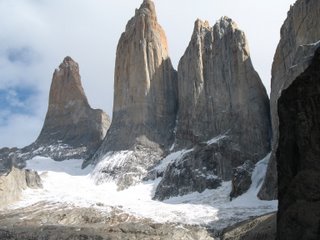Cusco and the Sacred Valley
After Bolivia, Cusco felt very touristy and there were a few instances which really grated, like being overcharged three times on my last day. It was clearly just blatant dishonesty, two out of the three situations were easily rectified and I tried to put it out of mind. The final straw was buying a bus ticket through a travel agent for a deluxe service to Arequipa and then being put on the economy service - once at the bus terminal this was little you could do to complain. The same thing happened to five others who trekked the Inca trail with me and booked through a different company, so its clearly a common scam.
Cusco was the capital of the Inca empire before the Spanish arrived. This empire was divided after the death of Inca Huayna Capac between the two half brothers Atahualpa and Huascar. Atahualpa, who controlled the northern half in modern day Ecuador, had gained control of Cusco, to reunify the Inca empire shortly before conquistador Francisco Pizarro´s arrival in 1532. Pizarro arranged a meeting with the victorius Inca in Cajamarca in northern Peru and despite being heavily outnumbered, was able to capture Atahualpa. The Inca was able to barter his survival for two rooms of silver and one of gold, yet despite fulfilling these grand claims, Pizarro had him executed anyway and then marched south to take control of Cusco itself. The Spanish clearly profited from the divisions in the Inca empire and having killed Atahualpa were viewed as allies.

Modern day Cusco has little apart from a few remaining Inca walls to remind you of pre-columbian times. The Spanish left a more permanent imprint, with some fine churches and a grand cathedral. Inside the cathedral there are some interesting Peruvian interpretations on catholicism - notably a black Christ and guinea pig for dinner in a reworking of Da Vinci´s Last Supper. Aside from the churches, my favourite building was the cloistered Coriancha, a real colonial gem, sitting atop one of the cities rare Inca remains. The Inca museum failed to really do this great civilisation justice and my attention switched to the surrounding ruins.
A few kilometres north of the city, lies the fortress and ceremonial centre of Sacsyhuaman. It was the site of a great Inca rebellion, when the Spanish were almost defeated. The impressive fortified walls remain and one can only imagine what Cusco itself would have looked like before the Spanish tore down the Inca temples and constructed churches in their places. As the road to Pisac snakes its way north there are a few smaller sites - the sacrificial site of Q´enko, the settlement of Pucapucara and the Inca fountains of Tambo Machay.
I arrived in Pisac on market day and the locals were out in force in traditional dress. This provided quite a colourful spectacle before I climbed up past the agricultural terraces to the ruins themselves - a large citadel set on the hillside overlooking the town itself. Having had a taste of some of the more accessible Inca ruins, it was time to visit the most famous of them, the lost city of Machu Piccu.
Cusco was the capital of the Inca empire before the Spanish arrived. This empire was divided after the death of Inca Huayna Capac between the two half brothers Atahualpa and Huascar. Atahualpa, who controlled the northern half in modern day Ecuador, had gained control of Cusco, to reunify the Inca empire shortly before conquistador Francisco Pizarro´s arrival in 1532. Pizarro arranged a meeting with the victorius Inca in Cajamarca in northern Peru and despite being heavily outnumbered, was able to capture Atahualpa. The Inca was able to barter his survival for two rooms of silver and one of gold, yet despite fulfilling these grand claims, Pizarro had him executed anyway and then marched south to take control of Cusco itself. The Spanish clearly profited from the divisions in the Inca empire and having killed Atahualpa were viewed as allies.

Modern day Cusco has little apart from a few remaining Inca walls to remind you of pre-columbian times. The Spanish left a more permanent imprint, with some fine churches and a grand cathedral. Inside the cathedral there are some interesting Peruvian interpretations on catholicism - notably a black Christ and guinea pig for dinner in a reworking of Da Vinci´s Last Supper. Aside from the churches, my favourite building was the cloistered Coriancha, a real colonial gem, sitting atop one of the cities rare Inca remains. The Inca museum failed to really do this great civilisation justice and my attention switched to the surrounding ruins.
A few kilometres north of the city, lies the fortress and ceremonial centre of Sacsyhuaman. It was the site of a great Inca rebellion, when the Spanish were almost defeated. The impressive fortified walls remain and one can only imagine what Cusco itself would have looked like before the Spanish tore down the Inca temples and constructed churches in their places. As the road to Pisac snakes its way north there are a few smaller sites - the sacrificial site of Q´enko, the settlement of Pucapucara and the Inca fountains of Tambo Machay.
I arrived in Pisac on market day and the locals were out in force in traditional dress. This provided quite a colourful spectacle before I climbed up past the agricultural terraces to the ruins themselves - a large citadel set on the hillside overlooking the town itself. Having had a taste of some of the more accessible Inca ruins, it was time to visit the most famous of them, the lost city of Machu Piccu.


0 Comments:
Post a Comment
<< Home